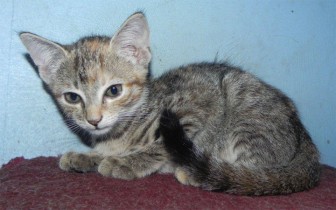– continued
Well, we have described the disease and the symptoms. Before we proceed to discuss the treatment, I would like to mention that some experienced veterinary practitioners (my old, now departed, mentor and professor included) swear that they can predict the development of HJD in the latter life of the dog, by just palpating the thigh bone/hip bone joints of the young (1 to 4-month-old) puppy. Since I have never been able to reliably acquire this particular dexterity, I have my doubts as to its certainty as a diagnostic tool. My own professor, notwithstanding his boast, definitely used the radiography (x-rays) accessory.
In any case, otherwise healthy puppies never sit still and are usually squirming about, so it might be difficult to really palpate the joints effectively – unless, of course, the puppy is heavily sedated or even anaesthetized. Now, you really do not want to subject your puppy to this type of stress. What the vet is attempting to do by palpating the joint and the hips is really at best an attempt to determine the grade (degree) of joint laxity (looseness of the joint).
Treatment of HJD
 The first therapeutic focus should always be to ease the pain and discomfort of the dog suffering from HJD. In so doing, the second focus is achieved, namely the improvement of the function of the joint. The easing of the pain can be accomplished by the use of analgesics (painkillers), preferably aspirin or one of the newer synthetic aspirin products used in the treatment of degenerative joint disease. Aspirin also has an anti-inflammatory effect. In addition, one can use corticosteroids, which also work against inflammatory processes.
The first therapeutic focus should always be to ease the pain and discomfort of the dog suffering from HJD. In so doing, the second focus is achieved, namely the improvement of the function of the joint. The easing of the pain can be accomplished by the use of analgesics (painkillers), preferably aspirin or one of the newer synthetic aspirin products used in the treatment of degenerative joint disease. Aspirin also has an anti-inflammatory effect. In addition, one can use corticosteroids, which also work against inflammatory processes.
While the chemical medication is taking place, the owner should concomitantly be ensuring that the animal reduces weight by placing it on a diet advised by the vet. Also, the dog should not be exposed to strenuous exercise, especially on concrete/asphalt. Controlled physiotherapy is indicated, again under veterinary advice and supervision.

These treatments mentioned above are medical, and at best may ease the problem in mild cases of HJD. Sometimes also there are other complications and considerations (age, health status, etc) that necessitate the medical approach
.
The other way of handling HJD is surgical. Well, here in Guyana, under the facilities which veterinarians operate, this is not a great option. The surgical treatments include the cutting away of some muscles to reduce pain, cutting away portions of the hip bone to prevent dislocation, resection of the head and neck of the thigh bone to reduce the arthritic effect of HJD, and so on.
So what do we do? It is difficult to continue forever keeping the dog on medication. However, the good side is that the prognosis can be quite variable. A relatively positive outcome depends also on the care the animal receives, its overall health status and the environment in which it lives.
Always an alteration in the animal’s lifestyle is required for a future comfortable existence.
If the pain is too excruciating for the animal, and you as the owner cannot bear to witness the agony, you may wish to discuss the matter further with your vet relative to the possibility of euthanasia. I tend to advise on the latter option, if I am convinced of the irreparability.
Please implement disease preventative measures (vaccinations, routine dewormings, monthly anti-Heartworm medication, etc) and adopt-a-pet from the GSPCA’s Animal Clinic and Shelter at Robb Street and Orange Walk, if you have the wherewithal to care well for the animals. Do not stray your unwanted pets, take them to the GSPCA’s Clinic and Shelter instead. If you do not wish your pet to have puppies or kittens, you may exploit the GSPCA’s free spay and neutering programme. If you see anyone being cruel to an animal, or if you need any technical information, please get in touch with the Clinic and Shelter by calling 226-4237.









